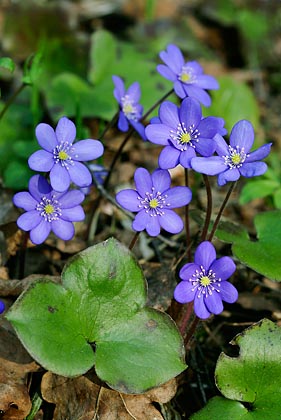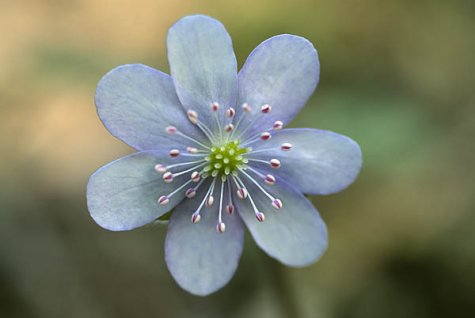Hepaticas bring real spring mood
Photos: Arne Ader
Translation: Liis
Hepaticas
Hepatica; Liverwort; Liverleaf Harilik sinilill Hepatica nobilis or Anemone hepatica
The downy, about 10 centimetres long flower stalks of the hepatica (or liverwort or liverleaf) grow up from close to the ground, from the axils of the leaves. Because the petals and sepals have not become differentiated the blue petals are actually tepals and on plants growing in the forest they are usually six or seven. The blue colour too is very variable, and on ageing it fades, but pink or white "petals" are not rare in nature. In fertile soils and suitable habitats the number of flowers on a plant can be quite remarkable.
From where does this early spring flowerer take such power at this time? The hepatica has an oblique brown rhizome in the ground with thick roots. Already last year the nutrients needed for flowering were stored there.
The hepatica’s three-lobed, leathery leaves are from the previous year (sometimes they are four-lobed, sometimes instead round), and when the plant starts flowering they already have a reddish tinge on the edges. The underside of the ”liver-shaped” leaf is actually the colour of raw liver – look for yourself, turn the leaf over. Hepaticas start growing new leaves only after flowering.
Hepatica flower. Pale variety










